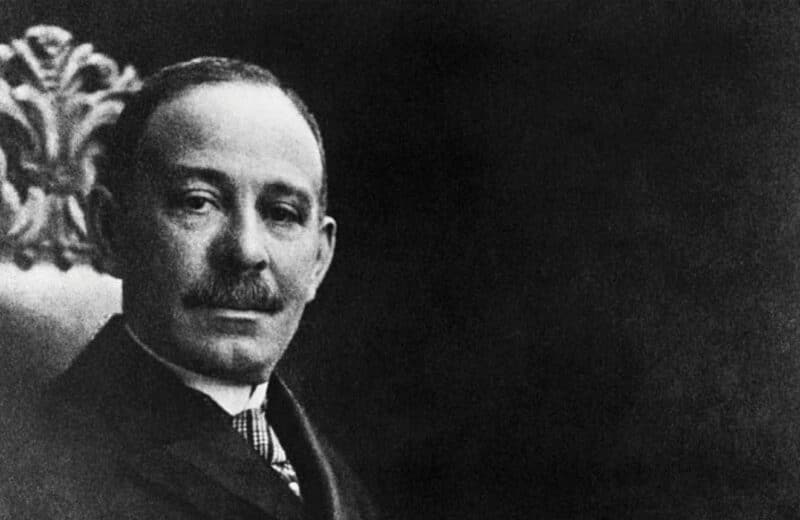How They’re Changing Our Brains and the Game
It’s nearly kickoff. Families and friends nationwide gather around the television and bundle up in stadiums and bleachers. They cheer on their sons and sports heroes as they battle over the holy pigskin. Bright lights illuminate sweat-drenched and grass-stained soldiers in their armored uniforms as they crouch, white-knuckled, ready to attack. The terrific clash of helmets off the scrimmage line rings through the air, titillating the fans. This is football. It’s exciting and unifying. It’s a modern-day, quasi-gladiator scene in which athletes showcase brute strength, resilience and loyalty to team, and rise up against the odds. It’s downright American. It’s also dangerous; much more so than many think—because of concussions—a startlingly complex and serious injury, once thought to be just part of the game.
As more of our legendary athletes age, the toll from years of head trauma is becoming all too clear as their memories disintegrate and substance-abuse problems and dementia plague them. In 2007, the University of North Carolina’s Center for the Study of Retired Athletes conducted a study of nearly 600 retired National Football League (NFL) players. It found that 20.2 percent of the players were suffering from depression.
HEAD IN THE GAME
Last February, former Bears safety and Super Bowl champion Dave Duerson shot himself in the chest after struggling with chronic headaches, blurred vision and memory loss. Before he died, he left messages to his family requesting that his brain be donated to The Center for Study of Traumatic Encephalopathy (CSTE) at Boston University (BU). He was 50 years old. Two other retired NFL players, Andre Waters, 44, and Shane Dronett, 38, also committed suicide in the past six years.
All three men had chronic traumatic encephalopathy (CTE), a neurodegenerative disease that is caused in part by repetitive trauma to the head. CTE used to be found mostly in boxers. It was called dementia pugilistica, or punch drunk syndrome. Like other neurodegenerative diseases, such as Alzheimer’s, CTE can only be diagnosed with an autopsy of the brain. Mood changes, lack of impulse control and mental confusion are some of the symptoms. Substance abuse and failed marriages are not uncommon outcomes—neither is suicide. In a 2009 study, the average age of death in 48 individuals diagnosed with CTE, including football players, boxers, a wrestler, a soccer player and a domestically abused woman, was just under 52.
Jim McMahon, the former “punky QB” quarterback for the Bears, is experiencing symptoms that he believes might be related to his football career. “My short-term memory seems to be hampered. Every once in a while I go through this period where I just don’t remember things. Laurie [Navon, his girlfriend] has told me a lot of things that I don’t remember doing. It’s frustrating at times.”
During his NFL years, McMahon famously marched to the beat of his own drum—a player who fought the establishment and rival teams to bring home two career Super Bowl titles. He frequently changed plays on the field at the last minute, which caused rifts with his Bears coach, Mike Ditka. He never missed a step, even when he suffered a lacerated kidney after being tackled during a 1984 game against the Los Angeles Raiders. And throughout his career, he ran the football and dangerously slid headfirst, contrary to the advice of professionals to protect his head.
“I only knew one way to play. Even when I slid feet first I got hit, so I figured, what the hell. I may as well try to get an extra yard,” McMahon says. But, it’s not just McMahon who is suffering from a physically intense career. “A lot of my friends have gone through problems like this,” he says of his former teammates. “Dave [Duerson] was the same way. Dave was tired of forgetting things, and he was very frustrated. And it showed in his brain that he had some problems.” McMahon has been promoting concussion awareness and, like his teammate, will donate his brain to the CSTE at BU for research.
NFL players aren’t the only ones afflicted. Athletes from other contact sports, even at the college level, have been diagnosed posthumously with CTE. Doctors found the disease in 21-year-old defensive linebacker for the University of Pennsylvania, Owen Thomas, after he hung himself in his dorm room in April 2010. Three National Hockey League (NHL) enforcers (Derek Boogaard, Rick Rypien and Wade Belak) committed suicide last year, leading to suspicions that they, too, might have suffered from CTE.
High-profile deaths like these have triggered a feverish investigation into concussions. While the NFL initially denied that these traumas could have long-term effects, it has since publicly acknowledged the dangers and recently donated $1 million to the CSTE at BU. In 2009, the NFL commissioned a study at the University of Michigan, which determined that ex-professional football players were more prone to developing memory-related diseases than the general population. Acknowledging this is just one step in a revolution that is rippling across the nation in how we view and treat the puzzling injury.
THE BRAIN MYSTERY
“We’ve learned more about concussions in the past ten years than we ever knew before,” says Dr. Julian Bailes, the new chairman of the department of neurosurgery and co-director of the NorthShore University HealthSystem Neurological Institute in Evanston. He is a former NFL and NCAA team physician and a founding member and director of the Brain Injury Research Institute. “When I was training as a neurosurgeon at Northwestern University in the ’80s, we were told that a concussion was just the brain not working right, but there was no injury. Now we know that, in some cases, there is an anatomical injury; a stretching or tearing of brain fibers,” he says.
Concussions are a unique and somewhat mysterious injury. They are virtually undetectable. They don’t show up on computerized axial tomography (CT or CAT) scans or magnetic resonance images (MRI). “We’ve learned in the past 10 to 15 years that there is injury at a cellular level,” Bailes says. When a player sustains a hit, it is not the first thump on the head that is so dangerous. The brain, he explains, is suspended in a bath of cerebral fluid, making it somewhat mobile. It is the movement of the brain, which has a JELL-O or custard-like consistency, banging up against the skull after a hard hit to the head that causes the injury.
The human brain is made up of billions of neurons that are constantly sending signals to one another to coordinate every function of the body, from speech to walking to emotion. Neurons are made up of two major structures: axons and dendrites. If you can picture a tree, the trunk would be like the axon and the branches like the dendrite. Axons, or the long trunks of the cell, are gathered together like stems in a bouquet of flowers to make up fibers within the brain. Different systems of fibers relate to different functions of the brain.
When a player gets a concussion, neurons and brain fibers are affected. The violent movement can cause structural damage to neurons and can stretch or tear fibers, disrupting brain function.
“You got dinged; you got your bell rung; you had cobwebs; you were seeing stars—there was every euphemism to say, ‘You’re OK; tape two aspirin to your helmet and get back out there,’” says Dan Bernstein, co-host of the sports radio program Boers and Bernstein on 670 The Score. That’s the way concussions used to be treated, he says.
“As long as you could sound semi-coherent and follow their finger without your eyes crossing, that was pretty much the test,” McMahon says of his NFL days. “There was nobody holding you out if you wanted to play.”
Part of the problem is that concussed players rarely look obviously injured. “You can see a broken bone; a foot that’s sticking out the wrong way; blood. There was always the macho code, ‘You look fine to me. Shake it off,’” says Bernstein. Players were only considered injured if they lost consciousness, vomited, or had other visible symptoms that indicated a Grade III concussion. Now we know that symptoms are difficult to detect and can take days or weeks to show up. “It’s not taboo to mention concussions anymore,” Bernstein says.
Last summer, Illinois was the 32nd state to pass a concussion bill. Governor Pat Quinn signed the bill into law on Soldier Field with the support of the Chicago Bears. The new Protecting Our Student Athletes Act makes it mandatory for schools to pull athletes out of play if they are suspected of having a concussion. Athletes must also get medical clearance before reentering the game and have their parent or guardian sign a consent form with information about concussions to even play certain sports.
The city of Chicago is blazing the trail in concussion awareness and sports changes. One organization, the Concussion Coalition of Chicago (CCC), has taken a strong role in working with the public. The CCC was founded last summer and is made up of 24 groups and foundations including the Division of Sports Medicine at Rush University Medical Center, Chicago Public Schools, the David Duerson Family and the National League of Retired Football Players. This past November, it hosted one of its first information sessions about concussions for parents, athletes and coaches at Martin Luther King, Jr. College Preparatory High School.
Dr. Jeffrey Mjaanes, the medical director of the Chicago Sports Concussion Clinic at Rush and a team physician for U.S. Soccer, spoke at the event. Coaches from all different sports and schools, male and female, little league and high school level came to learn. Although the attendance was less than organizers hoped for, those who did show up listened intently as the doctors answered questions and went through how to identify, prevent and treat concussions.
Confusion, sensitivity to light and noise, blurred vision and behavioral changes can all be signs of a concussion. Only about 10 percent or less of those athletes who experience concussions result in loss of consciousness, according to Mjaanes. Whenever a concussion is suspected, the player should be removed from the game and evaluated in a quiet place like the locker room. Every concussion should be treated with a mental and physical rest period of seven to 10 days, he says. That’s the window of time during which the brain is vulnerable and is trying to repair itself. Physical activity and mental stimulation, like watching TV or doing homework, should be minimized. If athletes are sent back into play too early, they can suffer from second-impact syndrome, an extremely dangerous condition in which the brain dramatically swells.
“All athletes who suffer from second-impact syndrome end up either disabled or dead,” says Mjaanes.
KIDS AND CONCUSSIONS
Concussions are on the rise. According to a study published in Pediatrics, the official journal of the American Academy of Pediatrics, teenagers 14 to 19 years old suffered from concussions at a rate 200 percent higher in 2007 than they did in 1997. Doctors have hotly debated whether the amount of concussions has actually increased or whether better awareness has led athletes to more frequently report them.
Mjaanes falls into the first category. “I think more concussions are happening for a couple of reasons,” he says. “Kids are bigger, stronger and faster, which means more momentum, which means harder hits. Hits in football today, especially in college football, would have killed somebody 20 years ago,” Mjaanes says. While humans tend to get larger and stronger as they evolve over generations, starting to train earlier might contribute to huge players becoming the norm. “We see kids playing contact sports at younger and younger ages. When I was growing up, there were no eight-year-old leagues for lacrosse or wrestling.”
Younger leagues are the starting point of a scouting process that differs greatly from what it was years ago. The athletes we watch on television are “engineered beasts,” Bernstein says. The introduction of performance-enhancing drugs and growth hormones in the ’70s has also contributed to more sports giants. “The ability of coaches to identify and develop players is better than ever. You don’t get a guy wandering onto campus and saying, ‘Oh, I might like to play football.’ They’ve known about him since the third grade.”
Besides breeding star athletes, younger leagues put children at risk for concussions at a time when their brains are still developing and especially vulnerable. Children and teenagers are at the highest risk for concussions and complications from concussions, according to Mjaanes. They have less-developed language skills to communicate when they don’t feel right, and their weaker necks, and poor head-to-body ratios make their brains more susceptible to trauma.
To drive the point home, during the information session at King College Prep, Mjaanes repeatedly played a video of two boys doing a drill at football practice. They could not have been more than eight years old. As they ran to tackle each other, they clashed helmets, propelling the smaller boy onto his back, his head following and finally pounding into the ground so hard that it bounced back up before crashing down again. Sharp gasps of “Ooo’s,” and “Damn!” filled the auditorium each time.
It’s not that the CCC, or anyone, is trying to scare the kids. “We want them to play. We just want them to play safely,” Mjaanes says. In baseball, pitchers have a certain number of pitches they are allowed to throw in one day—a pitch count—to protect them from throwing out their arms. Football practices should have a similar hit count, Mjaanes says. Players also need to be trained to tackle with their heads up rather than leading with them.
A study done by Purdue University, using accelerometers in helmets on football players at Lafayette High School in Lafayette, Ind., revealed that the students’ sustained subconcussive hits on almost every play—the effects of which are not entirely known.
“CTE develops because of repetitive exposure to brain trauma—that includes concussions and possibly even subconcussive blows,” says Robert Stern, co-director of the Alzheimer’s Disease Clinical and Research Program at the Boston University School of Medicine. Brains of people with CTE show an excess of the abnormal protein, tau, which shows up as brown stains on autopsies. “The parts of the brain that are involved in the disease seem to create this really awful combination of problems with emotional extremes and rage, and the inability to control one’s impulses,” says Stern. “It appears people eventually become fully demented.”
HELMETS FROM HELL
Researchers are still learning about the disease and how it works. The prevalence of CTE is not entirely known. Stern compares where we’re at with CTE to heart disease in the ’50s. “Early on, there weren’t any real treatments for heart disease, and there wasn’t much information about what caused it and what the risks were. One of the causes was smoking. But tobacco exposure was so embedded in our culture that it took people so long to change.”
In Westport, Conn., youth football coach Carmen Roda shaved tackling down to one to two practices a week and reduced concussions by about 50 percent over the season. Roda also began practices that season without helmets.
Helmets are actually incredibly ineffective at preventing concussions, which is why Riddell football helmets come with a sticker affixed to them that reads, “Contact in football may result in CONCUSSION – BRAIN INJURY which no helmet can prevent.” Other companies have similar disclaimers. If anything, helmets make matters worse.
“The reason helmets were developed was to prevent skull fractures and decrease the risk of brain bleeds, which is actually how football players used to die,” explains Mjaanes. But, what began as a leather cap has transformed into a weapon, says Bernstein. Today, helmets can withstand a record 2,500 Newtons, or about 562 pounds of force. “The helmets these days are getting so big that the players trust them. And then, they’re not really worried about hurting their heads,” McMahon says.
“The problem is that, yes, we can prevent skull fractures and brain bleeds with better helmets. But what we can’t prevent are concussions. Studies haven’t found a decrease in concussions with helmet use,” Mjaanes says. The reason goes to back to the basic anatomy of the cranium—the brain is suspended in fluid. No matter how much you pad an athlete’s helmet, the brain still moves and collides with the skull when a player is hit in the head.
So far, the only equipment that might help to prevent concussions is a simple collar, developed by Bailes and a group of researchers. The collar slightly compresses the jugular veins and increases cranial blood volume, reducing movement of the brain. “Our concept was to cut down on that movement that we call slosh,” Bailes says. Slosh is the term the researchers use to describe the movement and tearing of the brain that occurs during a concussion. “It’s the first time ever to attempt to prevent brain injury by internal protection,” he says. While the collar is promising, testing still needs to be done on humans.
PLAYING NICE
Both the NFL and the NHL have made rule changes and are enforcing stricter fines and penalties for violations. In a video on the NFL website explaining 2011 rule changes, former head coach of the Tennessee Titans Jeff Fisher says, “The NFL is committed to aggressively protecting defenseless players and removing from our game unnecessary and illegal hits to the neck and head. They simply won’t be tolerated.” Players are now fined in the tens of thousands for illegal hits.
Former player Brendan Shanahan took the position as the NHL’s new chief disciplinarian this summer. He has been extremely diligent this season about fining and suspending players for illegal hits to the head, earning him names like Sheriff Shanny and Shanaban. He posts a video on the NHL’s website every time the NHL penalizes a player, explaining the decision.
“The league has been very proactive in making changes in an effort to make the game safer,” says Blackhawks lead team physician, Dr. Mike Terry. Besides making rule changes, like no blindside hits to the head, and enforcing them, the NHL has recently modified the ice rink. The boards that make up the perimeter of hockey rinks are being switched to seamless tempered glass without aluminum rods. The boards are “more flexible and less rigid, so the impact causes less of a deceleration,” Terry says. This better protects players from concussions. Turnbuckles, the sharp corners between the team benches and sideboards, have traditionally been a perilous area. The NHL is replacing them with curved glass to eliminate the danger zone.
Besides improving the game in professional sports, the NFL and NHL are helping to shift sports culture around the country at every level. The Bears, in particular, are actively increasing awareness in student athletes. Last summer, they teamed up with the Illinois High School Association (IHSA) to create a Get Defensive Against Concussions campaign. Bears Brian Urlacher and Anthony Adams have helped lead the effort, collaborating with high school students to make public service announcements.
Healthy TXT™, a Chicago organization that uses mobile technology to educate the public on health matters, has also launched a campaign. The Be Unstoppable Football Tips
Campaign sends tidbits to users about concussions and other sports injuries. “Get Defensive Against Concussions is an attempt by the NFL to change the culture around concussions, to say ‘defend your health,’ to make it more proud to sit out if you need to,” explains Dr. Adam Bennett, a team physician for the Bears. Mjaanes also thinks the leagues are favorably increasing the awareness in communities. “When Jay Cutler gets pulled out for a concussion, all of a sudden parents start to think, ‘Well, maybe Tommy or Jenny has a concussion.’”
But, doctors still know very little about the long-term effects of concussions. “When you don’t know, you really need to err on the side of safety,” Bennett says. Players need to speak up when they feel different or notice changes in their teammates, he and Bailes say. Both spoke on a panel of doctors at Lake Forest High School (LFHS) last fall to parents and student athletes about concussions. The doctors and LFHS Athletic Trainer Jeff Dooley stressed that parents need to encourage their kids to share any symptoms with their coaches so that the school can help them.
“Trainers, know your players well,” Bennett says. Players will not only protect their brains, but they’ll play a better game without lingering symptoms if their concussions are recognized and treated properly. LFHS uses ImPACT™, a computerized neurocognitive test that measures brain function to determine whether a player has a concussion. The school now requires athletes who play contact sports to take a baseline test at the start of the season to establish a point of comparison if a test is later taken in the case of a suspected concussion. The management of concussions may be complicated; you really need a team of medical professionals caring for athletes, says Bennett. Awareness and treatments need to be multifaceted, involving parents, teachers, coaches and doctors.
The new concussion law originally included a clause about requiring a doctor to be present at games but was taken out because of budget concerns. Bennett says he worries about schools that can’t afford to have medical professionals monitoring players—a concern that coaches also voiced at the CCC’s event at King High School. As with all big changes, some people aren’t thrilled about the transformation of the sports culture. NBC commentator Mike Milbury said he wonders whether the Bruins would have the Stanley Cup under Shanahan’s new standards. “I think it’ll change the game. But these are really positive changes,” Terry says.
Who can forget BU hockey player Travis Roy, who was paralyzed from the neck down in 1999 after being thrown headfirst into the boards just 11 seconds into his first game? Or Chicago’s recent loss of Dave Duerson? But even with all the changes, the risk of concussions can never be eliminated completely. “You know, football is a violent game,” McMahon says. “Unfortunately, there are going to be injuries to people’s heads. It’s one of those things. Are you willing to take that risk? I know a lot of these guys are. I know I would do it again.” Having said that, McMahon did apply to the NFL for disability. The league just denied total and permanent disability, saying that he is capable of doing sedentary work. Bernstein says he loves football, but he won’t let his kids play the game—it’s just too dangerous.
“You drive your kids to football practice in a car with the highest safety rating and then let them hit each other repeatedly in the head,” Mjaanes says.
Bailes and Mjaanes are confident that sports organizations can make safety changes without taking away the excitement of the Super Bowl or the Stanley Cup. One thing is for sure though, says Mjaanes, “You only get one brain.”
Published in Chicago Health Winter 2012













